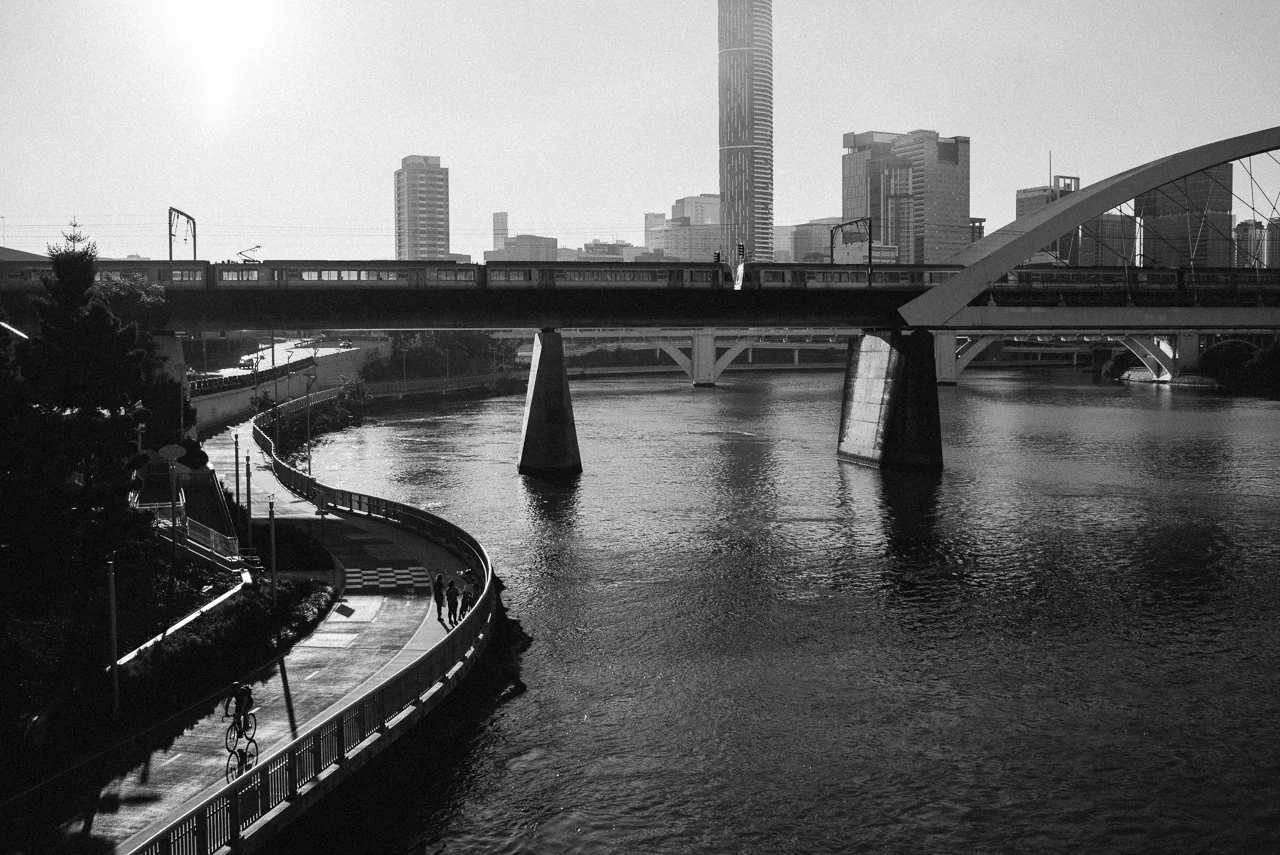Art & Street Photography
In my view, street photography primarily has one of two purposes, to document or to make art, even though these may both be present in some quantity. Artistic street photography associates less with the who, the where and the when, emphasising the composition such as lines, subject placement and colours. Documentary street photography associates more with those aforementioned human elements.
But these intentions behind street photography are easily brought to odds with the vulnerability present in the act. Making a photograph of a stranger walking down the street can, especially if you have a non-confrontational nature, cause anxiety and apprehension as to the consequences of such an act.
In most other genres, there is a certain amount of control in how you make a photograph, whether it's a portrait, a landscape or something else entirely. You can typically move and pose your subject, add or alter the lighting, adjust the set or props, or simply take your time.
On the other hand, what I find most satisfying about street or documentary photography is the lack of control. To make a great photograph of a unique moment with a stranger takes more than just technical skill. It requires a constant awareness of your surroundings, precise execution of timing and a certain lowering of your inhibitions, which is arguably one of the biggest components of the genre for me.
Imagine if someone walked down the street, pulled up their camera and took your photo as they passed. How would you react? Would you be put off? Offended? Or perhaps intrigued?
As someone who practices street photography, I guess I would be more intrigued than anything. I would wonder if they are also a street photographer? I would wonder what do they shoot with and where I might see the resulting image later on.
On the flip side, someone without any knowledge of the intent behind street photography might take offence at their photograph being taken without their permission. Many people not only dislike being in photos, but also have a justified scepticism when it comes to ill-intent and suspect motives, especially in an age where everyone has a camera in their pockets.
One aspect of practicing street photography is realising that at some point, someone may take noticeable offence toward you, possibly even with physical violence. Even if this is likely to be a rare occurrence, as someone who prefers to bear no ill will towards anyone if I can help it and also has no other intent than to create interesting and thought-provoking photographs, I honestly don't know exactly how I would react. Does the desire to create art prevent you from thinking about how others may feel?
To me, that's where the public's perception about photographers in general can come into play. A certain camera can put off a certain vibe. A DSLR or large-lens mirrorless camera can often incite a voyeuristic vibe. Indeed, in my very own city, there are a few photographers who wield telephoto lenses and wander around the mall scoping out people, taking no care at all to hide their possibly misunderstood intentions.
Rangefinders and compact mirrorless cameras, on the other hand, often not only are small and unthreatening in appearance, they often disarm and introduce a novelty factor. "Is that a film camera?" is a question I am often asked by people I meet when they see my digital Leica M. It's not, but people are easily fooled. In the grand scheme of camera gear, the rangefinder design has largely fallen out of fashion except in cases such as the Fuji X Series cameras.
Not only that, learning to use your camera efficiently so as to take the shot and move on fluently is something that helps reduce my own anxiety regarding that exposure to vulnerability, even if it's all in my head. People often notice you when you have a camera up to your face as you walk by. It's hard not to! People don't usually walk around with cameras in front of their faces.
But if you can pull off all of that, seeing the potential for a street photograph, zone focusing beforehand, nailing the composition in a split second and guessing the exact time at which your subject crosses the focal plane can lead to great satisfaction when you review your day's work and make the selections.
One of my fundamental desires in attempting to make street photographs is to capture some semblance of a story within the frame, to portray a moment as a moment, not just a person standing idly amongst their environment. If I can capture someone mid-walk, mid-smoke, mid-laugh or clearly in the depths of conversation or thought, I've been successful.
To me, it is these moments that make a street photograph something worth staring at. To wonder what they were doing, what was making them laugh or cry, or where they were going is what I would consider the elements that elevate these kinds of documentary photographs into the realm of art, and make them worthy of printing and viewing on paper or in a book.
As my dive into the genre of street photography gets deeper, I find myself beginning to pursue the artistic and documentary nature of it more, wanting to seek out existing works, existing photographers and read about the events that were taking place at the time they were taken. I don't attribute this drive solely to myself. My friends within the photography community have greatly influenced my desire to know more about such photographers and the times and environments they lived in, from politics to war, socio-economic trends and fashion statements, to the colours, tones and styles of composition that made their own work truly unique.
I hope that in fifty years, I'll be able to look back on my own photographs and see something like this in my own work.










































































































































